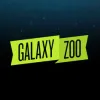Take a look inside 5 images
Galaxy Zoo
Pros: Kids can work with their friends to collect real data that gets used in actual research.
Cons: Teachers will have to find ways help kids see the relevance to their own lives.
Bottom Line: Classifying, comparing, and analyzing galactic data with this great, free tool can be influential to kids' involvement with science.
Galaxy Zoo works best if teachers set up groups for their class in the Navigator feature. Once you've created a group, you'll get a link to share with students so they can join the class. This is much easier than hand-entering information for each student.
Through the Navigator, your students can be part of the scientific process as they share and compare data with their classmates -- do some scaffolding to set them up for success. Galaxy Zoo also provides extensive raw data for analysis that could be useful for advanced projects, perhaps in IB or AP classes. Also, be sure to check out Zoo Teach forum, where you'll find lesson plans that other teachers have created for Galaxy Zoo, as well as other Zooniverse programs.
Zooniverse is an online database of citizen science projects, and Galaxy Zoo is one of these efforts. In Galaxy Zoo, users collect data based around astronomy research questions -- students can help analyze and classify images of actual galaxies that scientists use in their work.
This branch of citizen science counts on volunteer classifiers to categorize galaxies as spiral, elliptical, or merger. Users also determine the direction and number of spiral arms, along with the size of bulges. Thousands of independent classifiers might agree on the identification of a galaxy. This makes Galaxy Zoo reliable enough that scientists can use the results to guide their research.
Galaxy Zoo puts students right in the middle of credible research, along with contributors from all over the world. Yet it's still simple enough that a 7th grade student can participate. Kids go through a series of questions about the shapes and other features of a single galaxy, and support is integrated seamlessly every step of the way. If students still struggle, they can see examples in a help window. If, at the end, students still aren't confident in their selection, they can discuss in Talk Galaxy Zoo Forum.
On the surface level, Galaxy Zoo is still basic classification. If all students do is categorize, then they may not learn about how galaxies change over time. To move beyond the surface, they'll need to use the Navigator, where they can analyze data using graphs. This tool guides kids toward designing a research question and their own graph for further inquiry. Kids can select from different independent and dependent variables to ask a question like, "I'd like to see how red shift relates to apparent brightness." Clear teacher guidance, with well-crafted lessons around this tool, will be necessary. Fortunately, some of these resources can be found in the Zoo Teach forum.












